Papers by Kleanthis Sidiropoulos
Απαγορεύεται η αναδημοσίευση, η αναπαραγωγή, ολική μερική ή περιληπτική, καθώς και η απόδοση κατά... more Απαγορεύεται η αναδημοσίευση, η αναπαραγωγή, ολική μερική ή περιληπτική, καθώς και η απόδοση κατά παράφραση ή δια σκευή του περιεχομένου του βιβλίου με οποιονδήποτε τρόπο μη χα νικό, ηλεκτρονικό, φωτοτυπικό, ηχογράφησης ή άλλο, χωρίς προηγούμενη γραπτή άδεια του εκδότη, σύμφωνα με τον Νόμο 2121/1993 και τους κανόνες του Διεθνούς Δικαίου που ισχύουν στην Ελλάδα.

Sidiropoulos Kl., 2020
Riassunto. Questo testo è una presentazione dettagliata di alcuni tesoretti cretesi o parte di es... more Riassunto. Questo testo è una presentazione dettagliata di alcuni tesoretti cretesi o parte di essi, non pubblicati o editi solo parzialmente, insieme a informazioni d'archivio sul loro contenuto e sui contesti di nuclei più o meno noti, ora perduti. Se collocati nei loro contesti archeologici e cronologici, questi tesoretti forniscono informazioni per chiarire la presenza di valuta straniera nella circolazione monetaria dell'isola e le sue variazioni nel corso del tempo. Questi sono messi in relazione con le coniazioni cretesi di età ellenistica, emesse in un numero variabile di monete, e sono legati ai contesti socioeconomici che hanno creato o almeno influenzato sia la produzione che la circolazione di monete, le quali presentano caratteristiche distintive rispetto al resto del mondo greco al tempo contemporaneo. Περίληψη. Στο κείμενο παρουσιάζονται αναλυτικά κάποιοι κρητικοί θησαυροί ή τμήματα αυτών μερικώς ή πλήρως αδημοσίευτα, καθώς και αρχειακές πληροφορίες σχετικές με το περιεχόμενο και τις συνθήκες εύρεσης γνωστών αλλά και άγνωστων, χαμένων σήμερα, νομισματικών συνόλων. Ενταγμένοι στα αρχαιολογικά και χρονολογικά τους συμφραζόμενα δίνουν λαβές για σχολιασμό της ετεροβαρούς εξωκρητικής παρουσίας στη νομισματική κυκλοφορία του νησιού και τις κατά εποχές διαφοροποιήσεις της. Συσχετίζονται με την ασταθούς όγκου νομισματοκοπία του νησιού των ελληνιστικών χρόνων, τα οικονομικά και κοινωνικά δεδομένα που προκάλεσαν και διαμόρφωσαν ή έστω επηρέασαν τόσο την παραγωγή όσο και την κυκλοφορία των νομισμάτων με τα τόσο ιδιαίτερα χαρακτηριστικά τους σε σχέση με τον υπόλοιπο ελληνικό κόσμο της εποχής.
Προϊστορική έως και ρωμαϊκή περίοδος-Prehistoric to Roman Era Αυγή Έ. τζΑκου Αρχαιολογικό Μουσείο... more Προϊστορική έως και ρωμαϊκή περίοδος-Prehistoric to Roman Era Αυγή Έ. τζΑκου Αρχαιολογικό Μουσείο Ηρακλείου-Μουσειογραφικές προσεγγίσεις 3 The Heraklion Archaeological Museum-A Museographical approach 15 ιωΑννΑ ςΈρπΈτςιδΑκή, κΑτιΑ μΑντΈλή & χριςτινΑ πΑπΑδΑκή Νεολιθική κεραμεική από το οικόπεδο Αγγελιδάκη στον Μέσα Κατσαμπά 17 Neolithic pottery from the Angelidakis plot at Mesa Katsambas, Heraklion 33 ΑνΑγνωςτής ΑγΈλΑρΑκής & ΑθΑνΑςιΑ κΑντΑ Το νεολιθικό νεκροταφείο Αποσελέμη 35 The Neolithic cemetery of Aposelemis 58 ιωΑννΑ ΈυςτΑθιου, ΑθΑνΑςιΑ κΑντΑ & δΑνΑή ζ. κοντοποδή Σπήλαια της Περιφερειακής Ενότητας Ηρακλείου 59 Caves of the Heraklion region 70 Αντωνής ΒΑςιλΑκής, τOmAs ALusIK & Έιρήνή κρήτικοπουλου
Note: Blanks on pages are entries of other colleagues
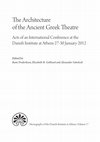
e Messene theatre, built in the rd century BC and abandoned in the late th century AD, was us... more e Messene theatre, built in the rd century BC and abandoned in the late th century AD, was used for both performances and political assemblies, according to literary and epigraphic testimony. e cavea, which is divided in eleven cunei, is supported by a strong retaining wall with arched gateways leading to the upper diazoma. No traces of the rd century BC wooden stage remains; the nd century BC scene building would have been rolled away on wheels and stored in a skenotheke. A ramp on the west side leads to the lower diazoma. Manumissions are inscribed on some of the stone seats. Six thrones for city dignitaries and several bases for honorary statues are set around the orchestra. A permanent stage with a proscenium of slender Ionic columns and semi-columns was constructed in the st century AD. A colossal three-storeyed scenae frons with a low broad pulpitum, constructed in the second half of the nd century AD, replaced the previous permanent stage; it was financed by Tiberius Claudius Saethidas Caelianus II, high priest of the Sebastoi for life and Helladarch of Achaia. e sculptural programme of the scenae frons is related to his ancestors and the Roman emperors Trajan, Hadrian, Septimius Severus, Marcus Aurelius and Lucius Verus with whom the family kept close ties. He was questor of the province Sicilia, augur and tribunus of the plebs and patron of the coloniae Abellinatum in Italy. Marble statues were erected in the niches of the scenae frons of Isis Pelagia, of Hermes and two portraits on Hermaic stelai. e Christianised inhabitants constructed their houses on the epitheatron and a built basilica nearby. e contribution on the mason marks focuses on the masons' marks used in the different phases of the theatre at ancient Messene, on each occasion only in specific parts of the structure. Different systems of counting or of making signs to facilitate construction and repair have been observed in the retaining walls, in the scene building and in the sculptural decoration of the theatre. is study aims to contribute to the understanding of the structure's architectural planning, the reconstruction of its exterior and ground plan and the dating of the individual construction phases, based on the mason's marks.

e Messene theatre, built in the rd century BC and abandoned in the late th century AD, was us... more e Messene theatre, built in the rd century BC and abandoned in the late th century AD, was used for both performances and political assemblies, according to literary and epigraphic testimony. e cavea, which is divided in eleven cunei, is supported by a strong retaining wall with arched gateways leading to the upper diazoma. No traces of the rd century BC wooden stage remains; the nd century BC scene building would have been rolled away on wheels and stored in a skenotheke. A ramp on the west side leads to the lower diazoma. Manumissions are inscribed on some of the stone seats. Six thrones for city dignitaries and several bases for honorary statues are set around the orchestra. A permanent stage with a proscenium of slender Ionic columns and semi-columns was constructed in the st century AD. A colossal three-storeyed scenae frons with a low broad pulpitum, constructed in the second half of the nd century AD, replaced the previous permanent stage; it was financed by Tiberius Claudius Saethidas Caelianus II, high priest of the Sebastoi for life and Helladarch of Achaia. e sculptural programme of the scenae frons is related to his ancestors and the Roman emperors Trajan, Hadrian, Septimius Severus, Marcus Aurelius and Lucius Verus with whom the family kept close ties. He was questor of the province Sicilia, augur and tribunus of the plebs and patron of the coloniae Abellinatum in Italy. Marble statues were erected in the niches of the scenae frons of Isis Pelagia, of Hermes and two portraits on Hermaic stelai. e Christianised inhabitants constructed their houses on the epitheatron and a built basilica nearby. e contribution on the mason marks focuses on the masons' marks used in the different phases of the theatre at ancient Messene, on each occasion only in specific parts of the structure. Different systems of counting or of making signs to facilitate construction and repair have been observed in the retaining walls, in the scene building and in the sculptural decoration of the theatre. is study aims to contribute to the understanding of the structure's architectural planning, the reconstruction of its exterior and ground plan and the dating of the individual construction phases, based on the mason's marks.
Messenian numismatic iconography, known in its broad outline, is expressed through an output with... more Messenian numismatic iconography, known in its broad outline, is expressed through an output with a chronological range from the 4th c. BC to the Severan age, with gaps, unevenly distributed in time and among the various issuing cities: Messene, Thuria, Korone, Pylos, Kyparissia, Kolonides, Asine. The aim of this paper is to present the numismatic types associated with local cults as a unified whole, evaluating their resistance to time, their distribution, their particular features and their ideological background, in relation to the historical contexts of the autonomous (in Hellenistic times) or dependent (Roman-period) cities, and to the much-discussed issue of the constructed or self-existent "national identity" of the Messenians.
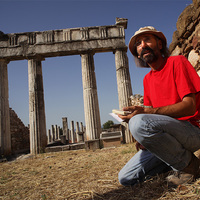
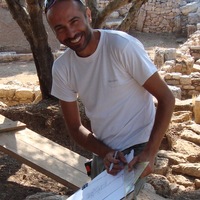
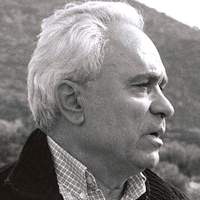
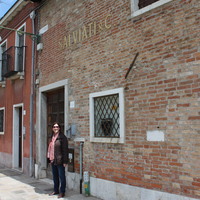
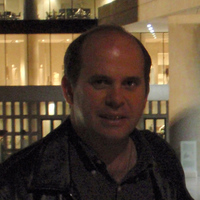
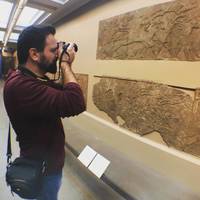

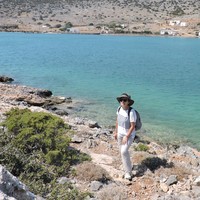

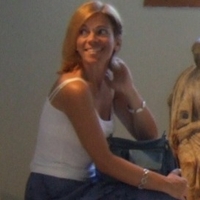
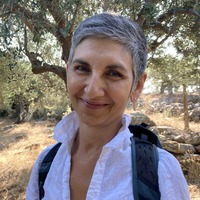
Uploads
Papers by Kleanthis Sidiropoulos
Η παρουσίαση στοχεύει να περιηγηθεί όλες τις εποχές στις οποίες το Ηράκλειο έδωσε ιστορικό παρόν. Συμπεριλαμβάνοντας με τον απαραίτητο σχολιασμό και μες στα ιστορικά τους συμφραζόμενα, τις νομισματικές εκδόσεις που κόπηκαν στην πόλη, τα μολυβδόβουλα, τα μετάλλια, τις osellae και τα jettons ακόμα και τις σφραγίδες που συσχετίζονται μαζί της, αδιάφορα αν παρήχθησαν εδώ ή απλώς βρέθηκαν για κάποιο λόγο και σκοπό στο έδαφός του. Να συγκεφαλαιώσει τις αναφορές της πόλης στις αρχαίες πηγές και και να συνδέσει πειστικά χάλκινες κοπές του 3 ου αι. π.Χ., κάποιες από τις οποίες βρέθηκαν πρόσφατα στις αποθήκες του Αρχ. Μουσείου, με μια περίοδο επίφασης αυτονομίας της στη βαριά σκιά της άμεσης γείτονος Κνωσού. Να παρακολουθήσει την οικιστική εξέλιξη του Ηρακλείου στη Ρωμαιοκρατία και την πρώτη Βυζαντινή περίοδο μες από τα γνωστά νομισματικά ευρήματα σωστικών ανασκαφών, επισημαίνοντας συγχρόνως τον περιορισμένο αριθμό των δημοσιευμένων παραδειγμάτων. Την περίοδο της Αραβοκρατίας (829-961 μ.Χ.) η πόλη απόκτησε ένα ιδιαίτερα ενεργό νομισματοκοπείο, η παραγωγή του οποίου όχι μόνο προσφέρει πολύτιμες πληροφορίες για τη γενεαλογία των τοπικών εμίρηδων αλλά περιγράφει συγχρόνως μια εικόνα εντελώς διαφορετική της παγιωμένης από τα βυζαντινά κείμενα των αλλόθρησκων ληστών και πειρατών. Άλλωστε τότε το Ηράκλειο κέρδισε την άτυπη μάχη και με την Κνωσό, ως το σημαντικότερο αστικό κέντρο της περιοχής και με την Γόρτυνα, ως το διοικητικό και θρησκευτικό κέντρο του νησιού. Η επανένταξη στη βυζαντινή αυτοκρατορία εδραίωσε την κατάσταση και έφερε την πόλη σε πορεία οικιστικής εξάπλωσης και εμπορικής αναβάθμισης στην Ανατολική Μεσόγειο. Νομισματικά ευρήματα, μεμονωμένα και θησαυροί, το υποστηρίζουν ικανοποιητικά. Έτσι όταν μετά τη φραγκική άλωση της Πόλης και τη διάλυση της αυτοκρατορίας η Βενετία εντάσσει στα 1211 την Κρήτη στην επικράτειά της και γίνεται η σημαντικότερη αποικία και η εκτενέστερη εδαφική επικράτεια της, ο Χάνδακας/Candia, όπως ονομάζεται πια η πόλη, μεταμορφώνεται σε διοικητικό και οικονομικό κέντρο, εμπορικό λιμάνι και καρδιά της στρατιωτικής ισχύος του νησιού. Μέσα από το πλήθος των πληροφοριών που αντλεί κανείς από τις νομισματικές εκδόσεις της Βενετοκρατίας, ειδικά τις κοπές ανάγκης στα χρόνια των πολέμων, τα αναμνηστικά και τιμητικά μετάλλια, τις αναφορές των αρχειακών πηγών σε θέματα νομισματικής και ευρύτερα οικονομικής πολιτικής και στα συναλλακτικά ήθη των καθημερινών ανθρώπων, μπορεί να αποκαταστήσει ένα ουσιαστικό κομμάτι της δημόσιας και ιδιωτικής ζωής τους. Τα δύσκολα χρόνια της Οθωμανικής κυριαρχίας με την ενδημική νομισματική αστάθεια επανέφεραν εντούτοις το αρχαίο όνομα της πόλης που ενώ στην καθομιλουμένη εξακολουθεί να αποκαλείται Κάστρο στην επίσημη γλώσσα ξαναγίνεται Ηράκλειο. Σφραγιστικά ευρήματα δείχνουν την πορεία της τοπωνυμικής αλλαγής μέχρι και την οικειοποίηση των εικονογραφικών τύπων από τα αρχαία νομίσματα της Κνωσού, οι οποίοι εμπεδώνονται στη διάρκεια της αυτόνομης Κρητικής Πολιτείας παράλληλα με την υιοθέτηση δραχμικού νομισματικού συστήματος, προαναγγέλλοντας την Ένωση με τη μητροπολιτική Ελλάδα. Η ιστορία της πόλης μέσα από τα μάτια των νομισμάτων, συμπληρωματική ματιά σε ένα θέμα που δεν θα πάψει να μας συναρπάζει.
In the framework of the activity “The Unseen Museum” an artifact from the non displayed material of the Heraklion Archaeological Museum is presented to the public for the fisrt time.
Leaflet (attached file .pdf) and video (https://vimeo.com/183447514)
ΔΙΑΒΑΖΟΝΤΑΣ ΤΗΝ ΠΕΤΡΑ
Στο πλαίσιο της δράσης «Αθέατο Μουσείο» παρουσιάζεται ένα τέχνεργο από το εκθεσιακά αναξιοποίητο υλικό του Αρχαιολογικού Μουσείου Ηρακλείου.
Φυλλάδιο (συνημμένο .pdf) και βίντεο (https://vimeo.com/183447514)